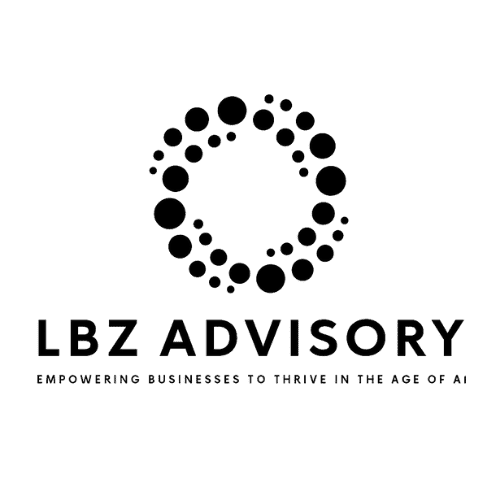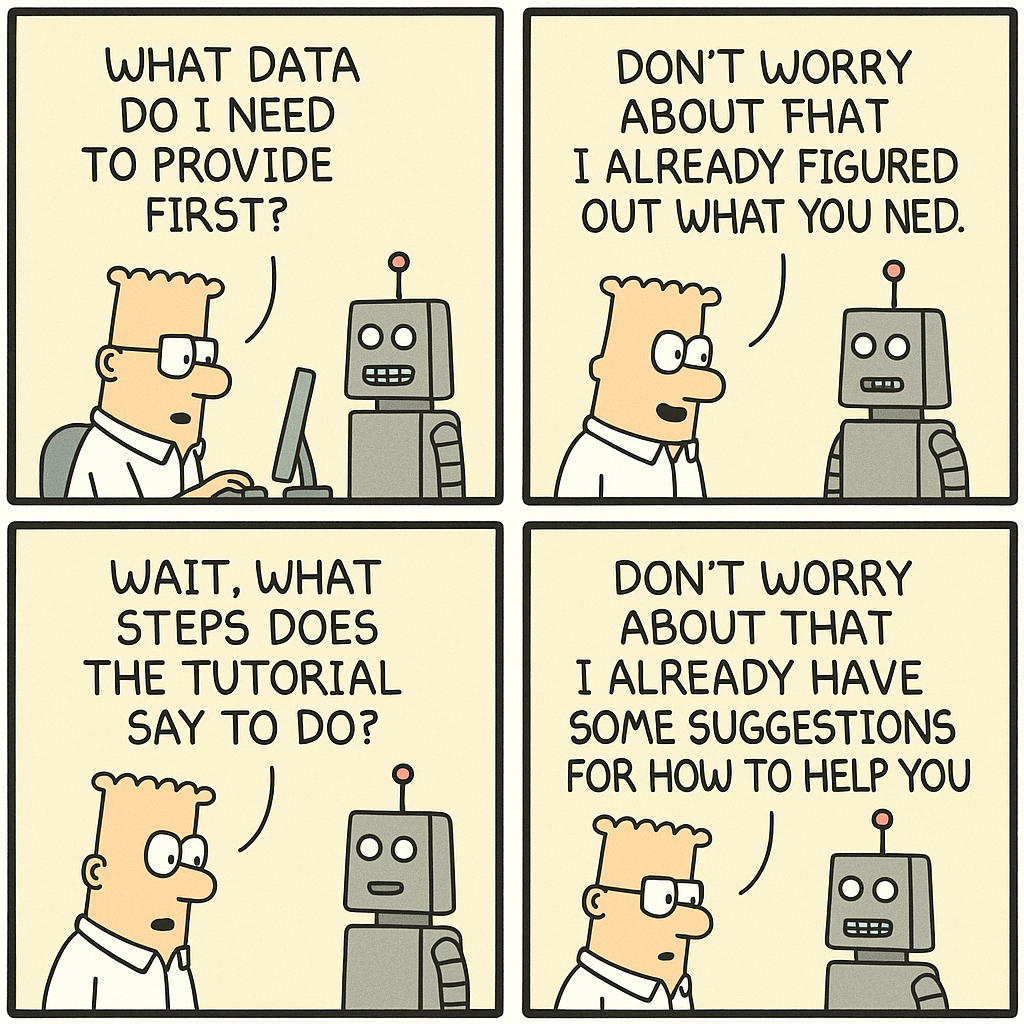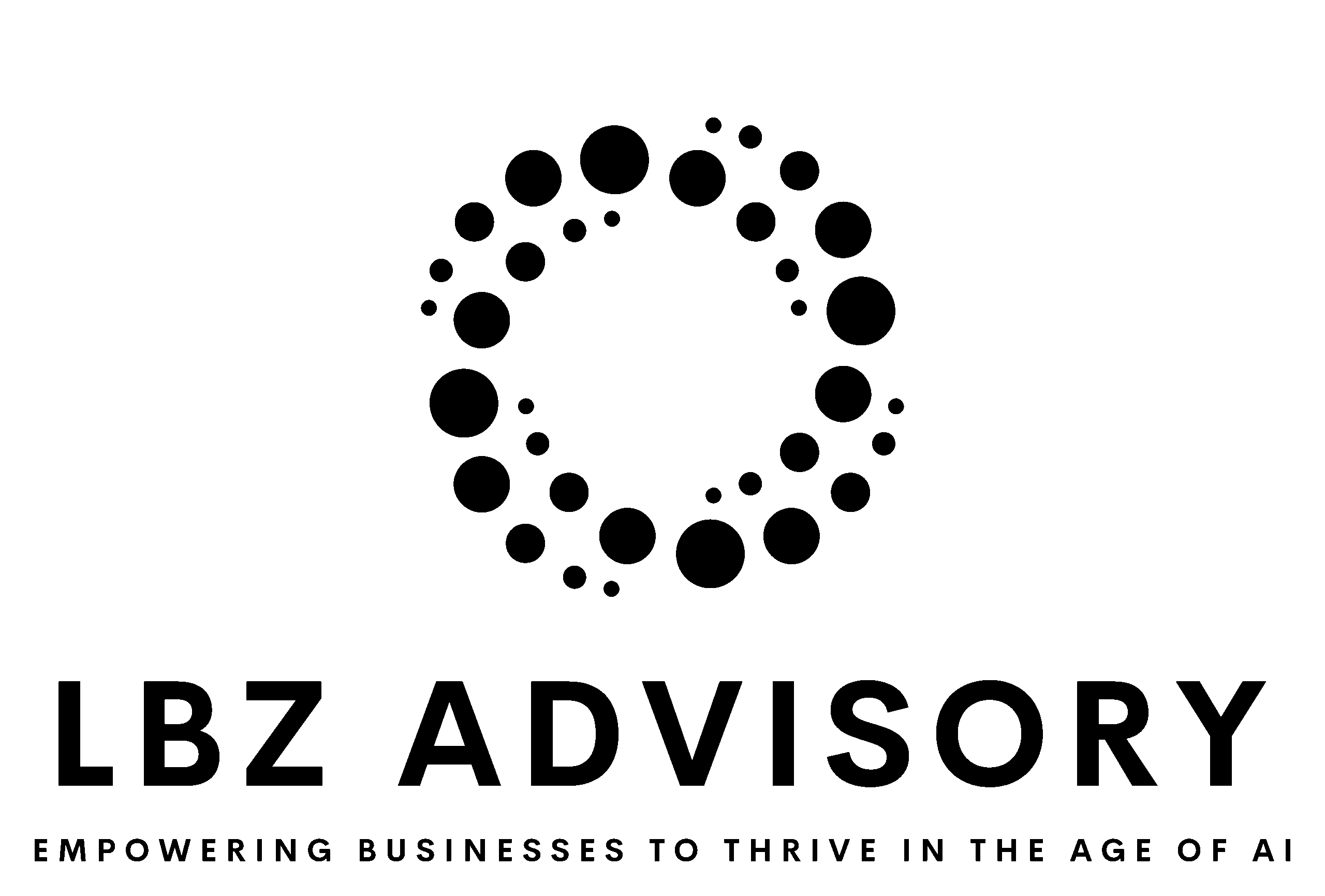A strategic framework for executives to transform AI from costly experiment to competitive advantage
The harsh reality: Your competitors are pouring millions into AI, but most will never see a return. While 91% of leading companies have ongoing investments in AI, less than 30% achieve measurable business impact.
After guiding Fortune 500 companies through AI transformations across healthcare, finance, manufacturing, and hospitality, I’ve identified the six critical failure points that separate AI success stories from expensive pilot graveyards.
The bottom line for leadership: These aren’t technical problems—they’re strategic execution challenges that require board-level attention and C-suite commitment.
The Six Strategic Pillars of AI Success
1. Data Infrastructure: Your Foundation for Competitive Advantage
The executive reality: Think of AI as a highly intelligent employee who learns from every document, spreadsheet, and database in your company. If those sources contain conflicting information, missing details, or outdated records, your AI “employee” will make decisions based on faulty knowledge.
What poor data quality looks like in practice:
In healthcare: Imagine trying to diagnose a patient when their medical history is split across five different computer systems that don’t talk to each other. One system shows they’re allergic to penicillin, another shows no allergies, and a third is missing the information entirely. An AI trying to recommend treatment would be working with incomplete, contradictory information.
In retail: Picture an AI trying to predict what customers will buy next, but your sales data shows the same customer listed as “John Smith,” “J. Smith,” and “Johnny Smith” in different systems. Your inventory data uses product codes like “SKU-001” while your marketing system calls the same item “Premium Widget.” The AI can’t connect these dots to make accurate predictions.
In manufacturing: Your factory floor has dozens of machines, each generating data about temperature, vibration, and performance. But Machine A saves data every minute, Machine B saves it every hour, and Machine C uses completely different measurement units. An AI trying to predict equipment failures would be like a doctor trying to diagnose a patient whose vital signs are measured with different instruments at different times.
The business consequence: A major hospital network implemented an AI system to help emergency rooms prioritize patients. For six months, it consistently missed serious conditions because lab results weren’t standardized across their locations. Critical patients waited longer than they should have, creating both patient safety risks and potential lawsuits.
Executive action required: Before investing in any AI technology, audit your data landscape. This means understanding where your critical business information lives, how it’s formatted, and whether different systems can share information effectively. This isn’t just an IT cleanup—it’s building the foundation that determines whether your AI investments succeed or fail.
2. The Build vs. Buy Decision: Where Most Executives Get It Wrong
The strategic question: Should you build internal AI capabilities from scratch or partner with companies that already have proven solutions?
Think of it like this: If you needed a new accounting system, you wouldn’t hire programmers to build one from scratch—you’d buy established software like SAP or QuickBooks. Yet many companies approach AI differently, assuming they need to create everything internally.
The expensive mistake in action:
Banking example: A mid-sized bank decided they needed AI to detect credit card fraud. They spent eight months recruiting data scientists, offering $200,000+ salaries to compete with tech giants. Meanwhile, fraudulent transactions were costing them $50,000 monthly. When they finally hired a team, it took another year to build and test their system.
The alternative? Several specialized fraud detection companies already offered proven solutions designed specifically for banks their size, with regulatory compliance built-in, for a fraction of the cost.
Retail example: A clothing retailer wanted AI to recommend products to customers on their website. They invested $2 million building an internal team and spent 18 months developing a recommendation engine. The result? Their system suggested winter coats to customers in Florida and recommended the same item customers had already purchased.
Meanwhile, companies like Dynamic Yield or Yotpo offered plug-and-play recommendation systems specifically designed for e-commerce, with years of optimization and millions of successful transactions behind them.
The hidden costs of building from scratch:
- Recruiting specialized talent (often 12-18 months)
- Trial-and-error learning curve (mistakes your competitors already solved)
- Ongoing maintenance and updates (requires permanent specialized staff)
- Regulatory compliance research (especially in heavily regulated industries)
Framework for making the right decision:
- How unique is your problem? Fraud detection is common; a proprietary manufacturing process might be unique
- How quickly do you need results? Custom development takes 12-24 months; proven solutions can be implemented in weeks
- What’s your risk tolerance? Building from scratch means unknown outcomes; established solutions have track records
3. Legacy System Integration: The Hidden Transformation Killer
The uncomfortable truth: Your new AI tools are like hiring a brilliant analyst who needs access to all your company’s information to do their job—but then locking them out of most of your filing cabinets.
Understanding the integration challenge:
Most established companies run on computer systems that were built 10, 20, or even 30 years ago. These systems handle critical functions like payroll, customer records, inventory management, and financial transactions. They work reliably, but they weren’t designed to easily share information with modern AI tools.
Real-world scenarios:
Banking: A bank wants to use AI to detect fraudulent transactions in real-time. But their core banking system—which processes all transactions—was built in the 1990s using programming languages like COBOL. Getting transaction data from this old system to a modern AI tool is like trying to connect a smartphone to a rotary phone. It requires custom translation software that can take months to build and test.
Manufacturing: A factory wants AI to predict when machines will break down, preventing costly downtime. The AI needs constant data from sensors measuring vibration, temperature, and performance. But their factory equipment comes from different manufacturers over several decades—some machines save data on floppy disks, others use proprietary wireless systems, and newer ones connect to the internet. Getting all this information to flow smoothly to an AI system requires extensive custom work.
Healthcare: A hospital wants AI to help doctors make faster, more accurate diagnoses. But patient information lives in separate systems: lab results in one database, X-rays in another, patient histories in a third, and medication records in a fourth. Each system was built by different vendors and uses different formats. The AI can’t get a complete picture of any patient without complex integration work.
The hidden costs:
- Time delays: What should be a 3-month AI pilot becomes a 12-month integration project
- Technical complexity: Requires expensive specialists who understand both old and new systems
- Risk of disruption: Connecting new systems to old ones can accidentally break existing operations
- Ongoing maintenance: These connections often require constant monitoring and updates
Why this matters strategically: An insurance company spent $5 million developing an AI system to improve their pricing models. The technology worked perfectly in testing. But when they tried to connect it to their 25-year-old policy management system, the integration project took an additional 18 months and doubled their costs. Meanwhile, competitors using more modern systems launched similar capabilities and captured market share.
4. Ethical AI: Your Regulatory and Reputational Shield
The boardroom reality: AI systems learn patterns from historical data, but they can’t distinguish between good patterns and problematic ones. If your company’s past decisions reflected unconscious biases or unfair practices, your AI will amplify these problems at massive scale.
Understanding AI bias in simple terms:
Imagine teaching someone to evaluate job candidates by showing them your company’s hiring decisions from the past 20 years. If your industry historically hired more men than women for technical roles, the AI will “learn” that men are better candidates—even if that pattern reflected bias rather than merit. The AI doesn’t understand context; it just sees patterns and repeats them.
Real-world examples that created serious problems:
Financial services: A major bank’s AI loan approval system was trained on 30 years of lending decisions. The historical data showed that applicants from certain zip codes had higher default rates. The AI learned this pattern and began automatically rejecting applications from these areas. The problem? Those zip codes correlated with minority communities, and the higher default rates reflected decades of economic inequality, not creditworthiness. When regulators investigated, the bank faced discrimination lawsuits and millions in fines.
Human resources: A large tech company created an AI system to screen resumes and identify the best candidates. They trained it on ten years of successful hiring decisions. The AI learned that the company’s top performers were predominantly male, so it began downgrading resumes that included words like “women’s college” or “women’s leadership program.” The company discovered the bias only after women complained that qualified female candidates were being systematically rejected.
Healthcare: A hospital system used AI to prioritize patient care based on historical treatment patterns. The AI learned that the hospital had historically spent less money treating Black patients—not because they needed less care, but due to systemic healthcare inequities. The AI interpreted this as meaning Black patients needed less intensive treatment, creating a dangerous bias that could worsen health outcomes.
Criminal justice: A city’s police department used AI to predict which neighborhoods needed more patrols. The system was trained on arrest data from previous years. Because police had historically focused more heavily on certain communities, the AI recommended increasing patrols in those same areas, perpetuating a cycle of over-policing in minority neighborhoods.
The business consequences:
- Legal liability: Discrimination lawsuits can cost millions and take years to resolve
- Regulatory scrutiny: Government agencies are increasingly auditing AI systems for bias
- Reputation damage: Public exposure of biased AI creates lasting brand damage
- Lost talent: Biased hiring systems drive away diverse candidates and employees
- Market exclusion: Biased customer-facing AI can alienate entire customer segments
Why traditional oversight isn’t enough: Unlike human decisions, AI systems can make thousands of biased decisions per day, affecting vastly more people than any individual could. A biased human recruiter might affect dozens of candidates; a biased AI system can affect thousands.
5. Data Security: Protecting Your Most Valuable Asset
The security paradox: AI systems need vast amounts of your most sensitive business data to work effectively, but concentrating all this information in one place creates unprecedented security risks.
Understanding the unique AI security challenge:
Traditional business software typically handles one type of data—your accounting system processes financial records, your HR system handles employee information, your customer database stores contact details. But AI systems often need access to multiple data sources simultaneously to make intelligent decisions.
Real-world security scenarios:
Retail example: A clothing chain wants AI to personalize shopping experiences. The system needs access to:
- Customer purchase histories (what they bought, when, how much they spent)
- Personal preferences (sizes, colors, style choices)
- Browsing behavior (what they looked at but didn’t buy)
- Demographic information (age, location, income estimates)
- Payment information (credit card types, payment patterns)
All this sensitive data gets combined in the AI system. If hackers breach this system, they don’t just get customer names—they get complete profiles that could enable identity theft, financial fraud, or highly targeted scams.
Healthcare example: A hospital’s AI diagnostic system needs access to:
- Patient medical histories (including mental health, addiction, genetic information)
- Insurance details (coverage, payment histories)
- Prescription records (including controlled substances)
- Lab results and imaging (highly detailed health information)
- Family medical histories (genetic predispositions)
A breach here doesn’t just violate privacy—it exposes information that could affect patients’ ability to get insurance, employment, or loans for the rest of their lives.
Financial services example: A bank’s fraud detection AI monitors:
- Real-time transaction data (every purchase, withdrawal, transfer)
- Account balances and credit limits
- Spending patterns and locations
- Personal financial goals and investment strategies
- Credit histories and loan information
If this data is compromised, criminals have everything needed to drain accounts, open fraudulent loans, or steal identities.
The expanding regulatory landscape:
GDPR (European Union): Fines up to 4% of global annual revenue for data protection violations. Many AI projects have triggered investigations because they process personal data in ways customers didn’t expect.
CCPA (California): Gives consumers the right to know what personal information is collected and how it’s used. AI systems that combine data from multiple sources often violate these transparency requirements.
HIPAA (Healthcare): Violations can result in fines up to $1.5 million per incident. AI systems that process health data must meet strict security standards that many companies underestimate.
Recent costly breaches:
- A major retailer’s AI recommendation system was misconfigured, exposing 40 million customer profiles in an unsecured cloud database
- A healthcare AI company’s servers were breached, exposing patient diagnostic data for 2.2 million people
- A financial services firm’s fraud detection system leaked transaction patterns that revealed customers’ spending habits and locations
6. Production Scalability: Where Pilots Go to Die
The scaling challenge: Most AI pilots work beautifully with limited data and users. Production environments with millions of transactions and real-time demands tell a different story.
Failure patterns:
- Retail recommendation engines that crash during peak shopping periods
- Logistics optimization that breaks down when fleet size doubles
- Customer service chatbots that can’t handle traffic spikes
Production readiness checklist for executives:
- Cloud-native architecture with auto-scaling capabilities
- Automated model retraining and validation pipelines
- Comprehensive monitoring with rollback procedures
- Load testing at 10x expected capacity
Your Strategic AI Roadmap: From Executive Vision to Market Reality
The transformation imperative: AI isn’t a technology project—it’s a business transformation that requires the same strategic rigor as market expansion or acquisition integration.
Executive success framework:
- Secure board-level sponsorship for data governance transformation
- Establish AI ethics committee with representation from all critical business functions
- Create dedicated integration budget separate from AI development costs
- Implement robust security governance before any model sees production data
- Build scalable infrastructure designed for 10x growth from day one
- Develop clear build-vs-buy criteria aligned with core business strategy
The Competitive Reality: Why This Matters Now
Companies that master these six pillars don’t just avoid failure—they create sustainable competitive advantages. They turn AI from a cost center into a profit engine, from a risky experiment into a reliable growth driver.
The opportunity cost: Every quarter your organization spends struggling with preventable AI failures is a quarter your competitors could be pulling ahead with properly executed AI strategies.
What’s your organization’s biggest AI challenge? Share your experience in the comments below, or connect with me directly to discuss how these frameworks apply to your specific industry and strategic objectives.
Ready to transform your AI strategy from expensive experiment to competitive advantage? Let’s explore how these proven frameworks can accelerate your organization’s AI success.
Related Articles:
- https://liatbenzur.com/2025/04/15/unseen-computing-shift-ai-collaboration/
- https://liatbenzur.com/2025/03/07/ai-quiet-revolution-company-culture-leaders-respond/
- https://liatbenzur.com/2024/12/09/harness-ai-strategically-dont-lose-your-edge/
- https://liatbenzur.com/2025/05/03/ai-killed-user-journey-product-design-strategy-obsolete/















